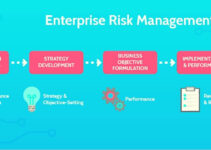Introduction
The growth and success of any business rely on the strategy it adopts. The strategy outlines the plan for the company to compete in the market and earn profit. However, companies are operating in a very competitive business environment. Their goal is to increase the value of shareholders and owners in order to secure future investment. Today, we’ll discuss what is a business strategy, how it is different from the business model and business plan, importance/level/component of business strategy.
What is a Business Strategy?
A business strategy describes the plan of action for the company to achieve goals and guides the company’s decisions in order to achieve financial stability in the competitive market. In simple words, we can say that it’s a high-level plan that allows a company to achieve its goals and objectives.
A business strategy is an integration of all the activities and decisions taken by the company in order to achieve its goals and gain a competitive edge in the market. It offers a roadmap to the company to meet its targets.
Business Strategy vs Business Plan vs. Business Model
The business model is an ideal and conceptual structure of the company that outlines how the company plans to achieve its goals, make money and revenue, and run various operations.
The business plan is the process of devising short-term and long-term goals and outlining necessary steps to achieve them.
However, the business strategy is a small part of the business plan that offers a roadmap in order to achieve its goals and objectives.
Importance of Business Strategy
If the objectives of any company don’t have a strategy, then it would be just a dream and gamble. It’s because you’re entering the market without any planned strategy. However, the market competition has increased the significance of strategies. Some of the main reasons why business strategy is important for your business are as follows;
Control
As we know that it offers you a roadmap and path to follow in order to reach your goals and objectives. Once you know the path, then you can easily check and control various operational activities whether they’re working as planned or not.
Competitive Edge
The focus of the B strategy is to exploit your company’s strengths and gain a competitive edge in the market in a unique way. It would provide a unique business identity in the eyes of customers.
Efficiency & Effectiveness
When you plan various activities, allocate resources, and everyone in the company is aware of one’s roles and responsibilities. Then efficiency and effectiveness of the company would automatically increase.
Strengths & Weaknesses
B strategy allows you to be familiar with your strengths and weaknesses while planning the roadmap. Most importantly, it allows you to focus on your strengths and reduce your weaknesses.
Planning
As we know the B strategy is a small part of the business plan. The business plan devises the goals and objectives for the entire organization, and the strategy gives you the roadmap to reach there.
Levels of Business Strategy
When we talk about achieving the goals and objectives of the organization, then you have to implement strategies effectively. While doing so, every employee, stakeholder, manager, and partner should be on the same page in achieving the objectives. They all would be following various strategies at different levels of the organization. Some of the main levels of strategies are as follows;
Corporate Level
The corporate level strategy outlines the strategic plans for the top management of the company. They create a vision and mission statement that impacts the performance of the company in the long term. In fact, they guide the decision of the company in terms of investment, diversification, acquisition, and growth.
Business Unit Level
The business-level strategy follows the corporate vision, but it focuses on the specific business unit. If the organization is big, then there would be various business units within the organization and different strategies for every unit. However, this level converts corporate vision into a realistic and solid strategy that describes how the company would compete in the market.
Functional Level
Various departments of the business units design the functional level strategies. The departments aren’t limited to CRM, Finance, Operation, Sales, Marketing, etc. The functional level strategy has to meet the daily deadlines in terms of decisions and activities set by the corporate level and business unit level strategies. It has to meet functional goals while developing and maintaining relationships among various departments.
Components of Business Strategy
As we have discussed that business plan sets the goals and objectives of the company. The b strategy answers questions like how, when, where, who, why, and what is relevant to achieving the goals. Some of the main components of the business are as follows;
Vision/Mission/Objectives
The B strategy outlines the roadmap for the company to follow. It provides direction to the company’s vision, mission, and objectives. Like who is responsible for various activities, how to perform various tasks, and what they should do.
Core Values/What is business strategy?
It provides clear instructions in terms of what the company must do and what it must avoid. Such clarity of instructions removes doubts at the corporate level, business unit level, and functional level of the organization.
SWOT Analysis
Swot analysis is the very tool to know the current situation of the company by analyzing its strengths, weaknesses, opportunities, and threats. It’s one of the mandatory elements of the b strategy. However, it helps the company to focus on its strengths and opportunities, and avoid weaknesses and threats.
Operational Methods
The business unit and functional level strategy provide a deep operational plan in terms of performing the work efficiently and effectively. It helps employees to save up their time and effort because they exactly know what they have to do.
Procuring & Allocating Resources
Resource allocation and procurement plan help you to answer what, how, and where you’re going to procure resources. How you would be allocating resources and who is going to manage it.
Measurement
If there are no measuring protocols, then you can evaluate the performance of any strategy. That’s why a good B strategy always includes a measuring protocol and tracking the company’s performance.
Examples of Business Strategy
Amazon
Amazon is the world’s leading e-commerce platform and offers the best customer service. However, the B strategy of Amazon is to get a competitive edge with cost leadership. The company’s focus is on satisfying the needs of customers.
The business and function level (like marketing, operation, sales, etc) strategy of Amazon focuses on valuing customers, achieving economies of scale, price, and choices.
Reckitt Benckiser
Reckitt Benckiser is a customer retail company. The company’s sales started declining in 2012 and the company changed its B strategy. However, its new strategy comprises of following elements;
- Conducting R&D in the new product line that increased sale and profitability
- Amplified its marketing budget to increase customer market
- Tracking the performance of those areas that are growing
Reckitt’s strategy couldn’t achieve its target initially, then the company made some changes in the B strategy and its sales and revenue started increasing.
Conclusion: What is a Business Strategy?
After an in-depth study of what is a business strategy, the levels, importance, and components of B strategy; we have realized that B strategy is very significant in outlining your company’s goals. If you’re developing the strategy for your business, then follow and practice the abovementioned guidelines.

Ahsan Ali Shaw is an accomplished Business Writer, Analyst, and Public Speaker. Other than that, he’s a fun loving person.


